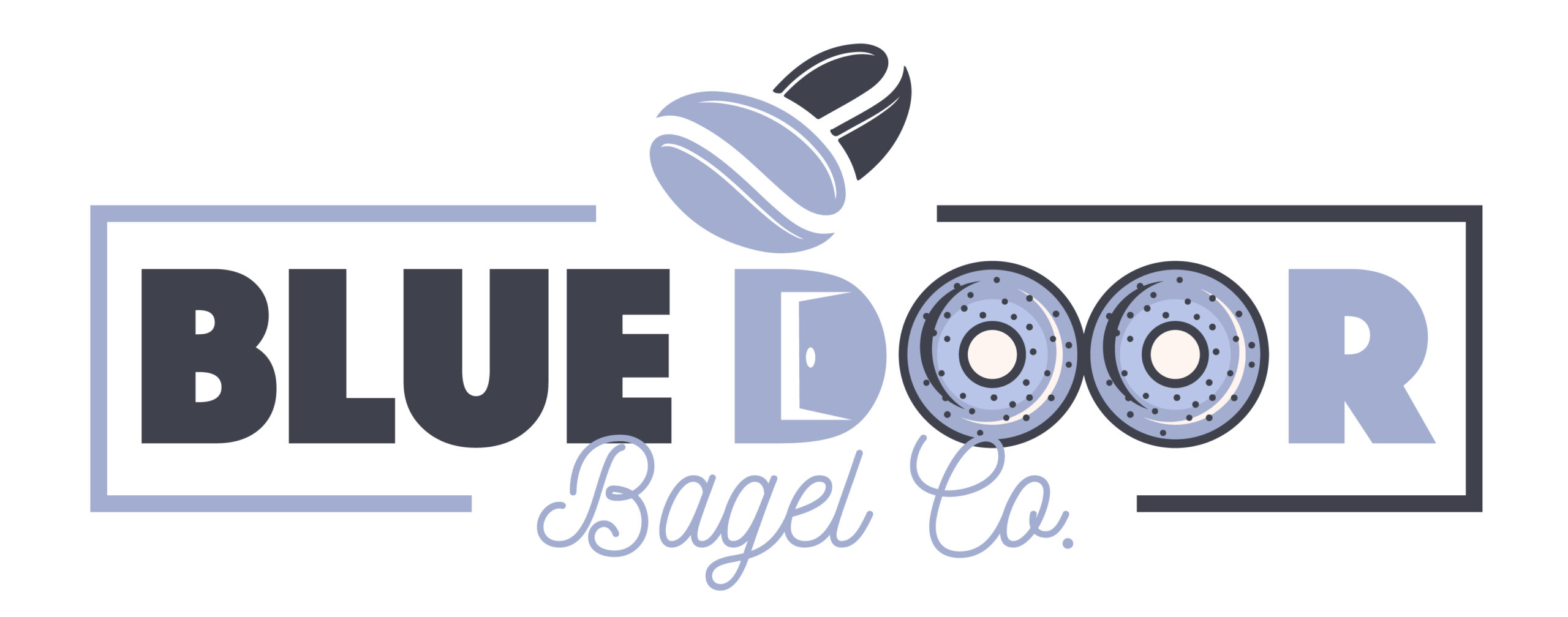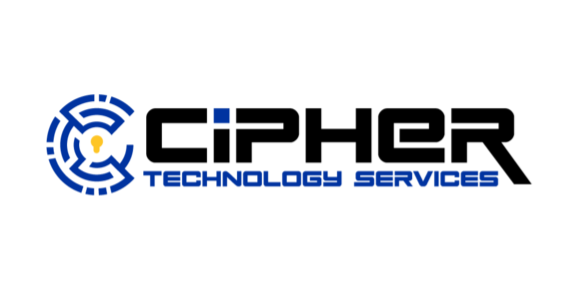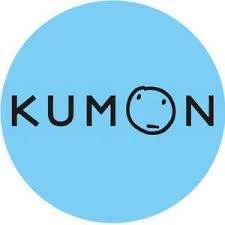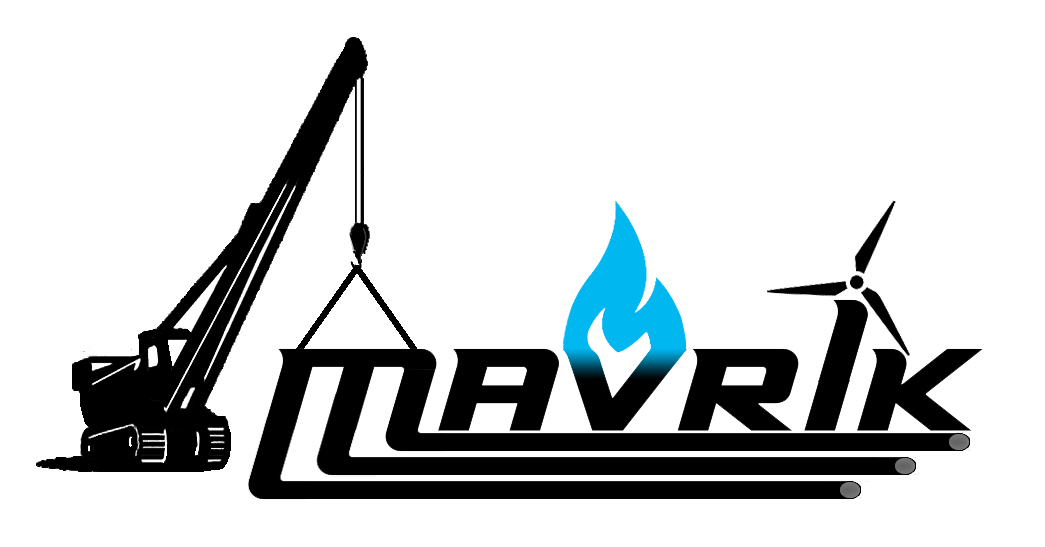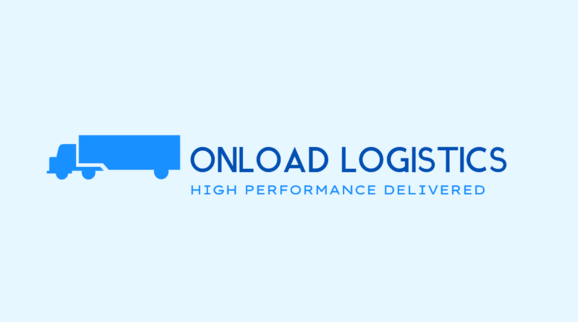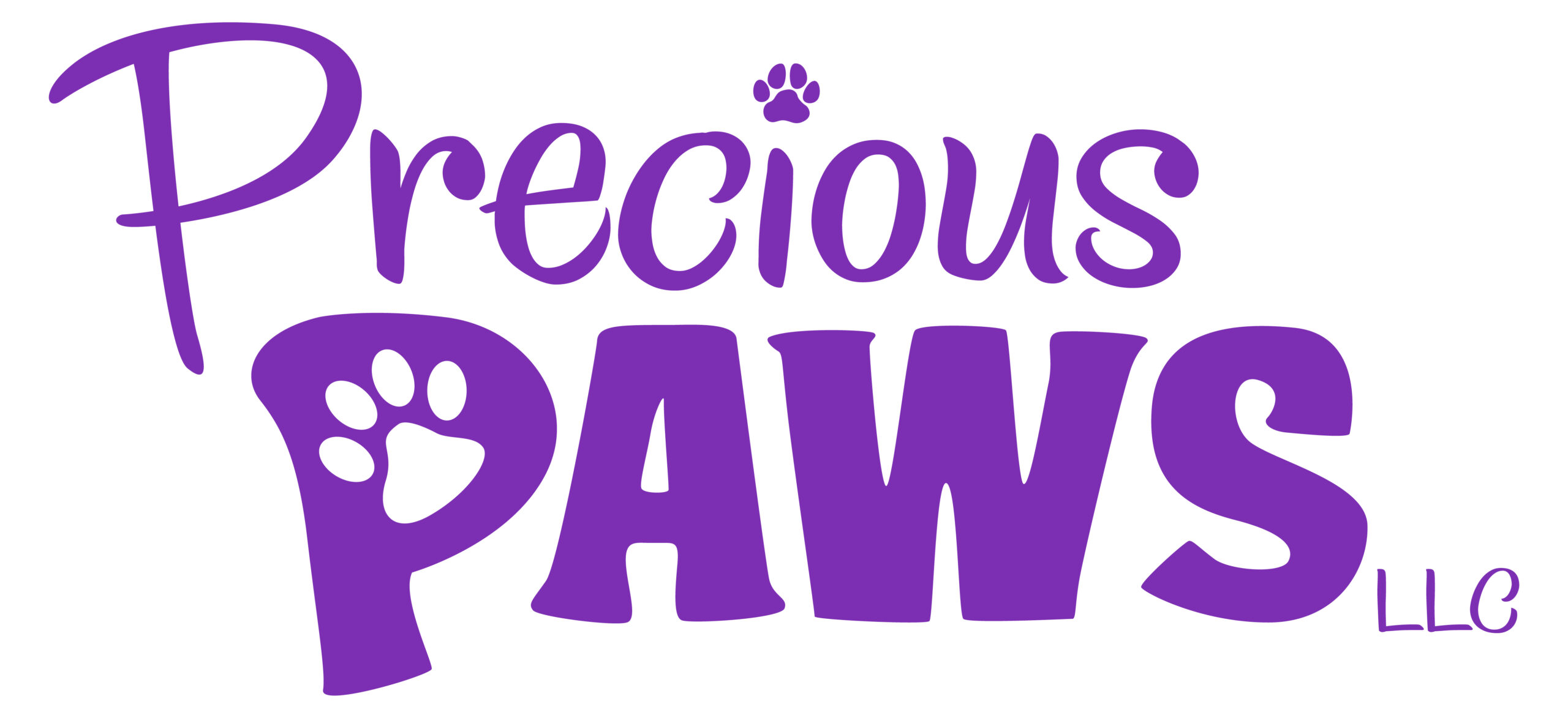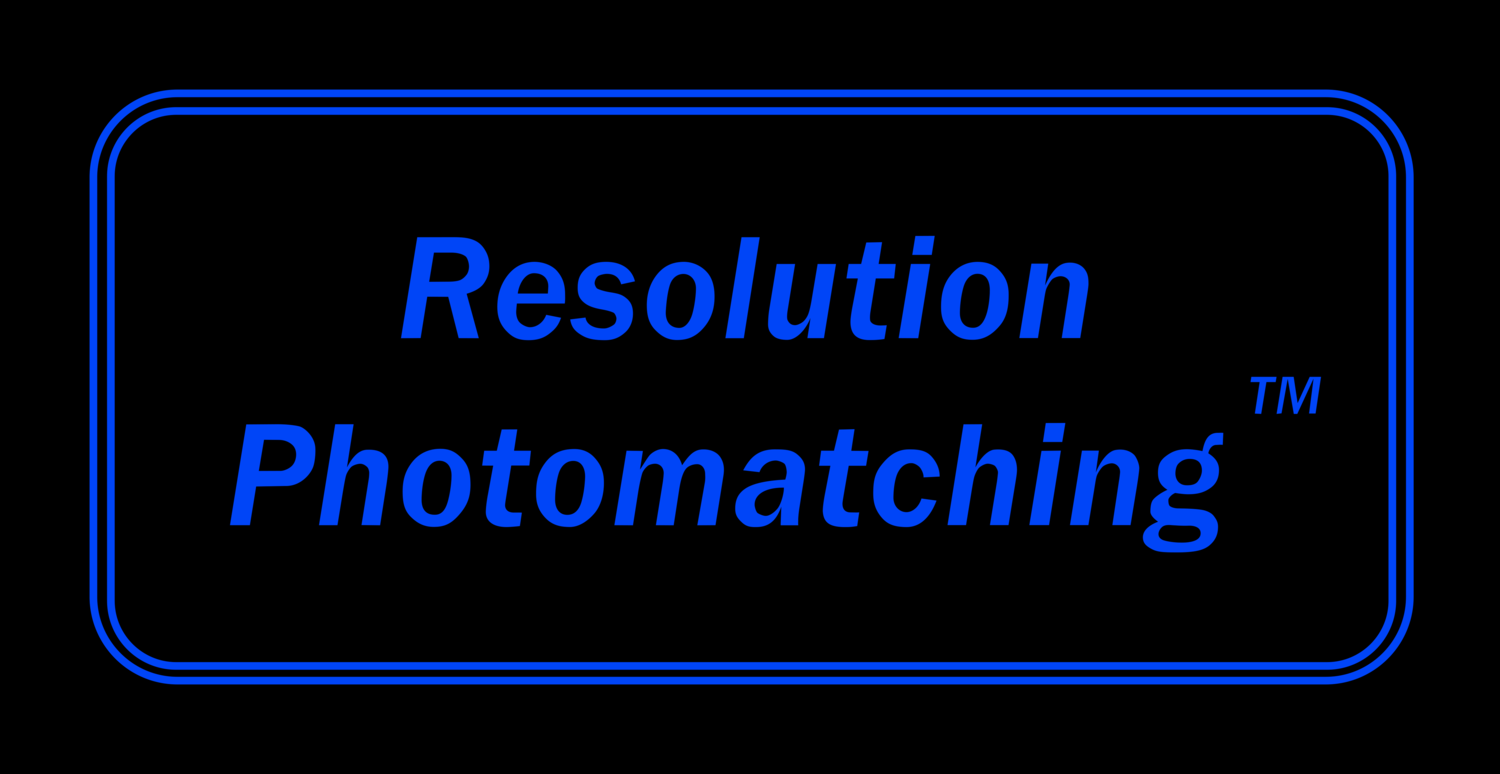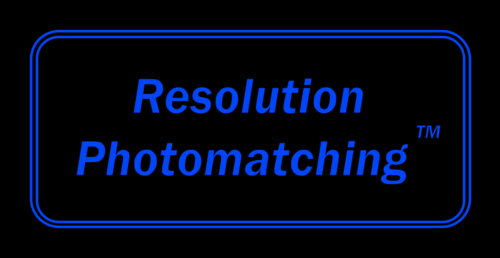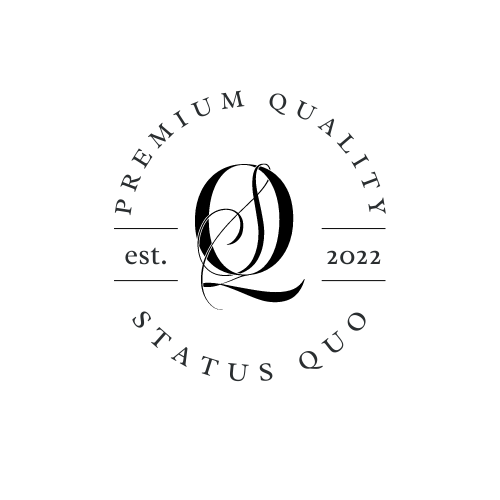The State of Small Business Growth: Barriers and Breakthroughs in 2025
Overview: Small Business Conditions in 2025
Small businesses in the U.S. are entering 2025 with cautious optimism, tempered by the lessons of the past few years. These firms remain the backbone of the American economy, accounting for 99.9% of all businesses and roughly 46% of private-sector jobs. Entrepreneurial activity is still elevated: Americans filed a record 5.5 million new business applications in 2023, exceeding even the startup boom of 2021. Thanks to this wave of entrepreneurship, the “new normal” for startup formation is much higher than pre-pandemic levels (about 37% higher than 2019).
Overall business sentiment reflects guarded confidence. Nearly 7 in 10 small business owners (69%) feel positive about their financial outlook for 2025, and 78% plan to grow in the coming year. National surveys like the MetLife/U.S. Chamber Small Business Index show a solid (if not booming) outlook – the Q1 2025 index registered 62.3, roughly on par with early 2024. This suggests owners are “cautiously optimistic” about their own businesses even as broader economic confidence wavers (only 29% rate the national economy as good). The legacy of pandemic disruptions is fading: key performance metrics (sales, employment) have rebounded well above 2020 lows and held steady through 2023, though they still lag pre-COVID highs. In short, small businesses have proven resilient and adaptive – but they also face a new slate of post-pandemic challenges that could hamper growth.
Key Barriers Facing Small Businesses Post-Pandemic
Despite their resilience, small businesses are grappling with significant headwinds in 2025. In surveys, more than 9 in 10 firms reported some financial or operational challenge in 2023, underscoring how widespread these issues are. The key barriers include:
High Inflation and Rising Costs: Inflation spiked coming out of the pandemic and remains the No. 1 concern for a majority of small businesses. In early 2025, 58% of small businesses said inflation was their biggest challenge, a record high. Business owners have seen the costs of supplies, inventory, and utilities climb and squeeze their margins. Nearly 54% of owners want policymakers to prioritize taming inflation, reflecting how directly it hits their bottom line. Many firms have had to raise prices, but fear of losing customers limits how much they can pass costs along.
Labor Shortages and Talent Gaps: The struggle to hire and retain employees, especially those with the right skills, continues to constrain growth. Hiring qualified staff remains the most common operational challenge, even though it has eased slightly since the peak of the pandemic. Among businesses trying to hire in 2025, 89% report difficulty finding qualified workers, often because small firms can’t match the pay and benefits offered by larger companies (cited by 62% of owners). This labor scarcity is forcing many small businesses to operate below capacity or work longer hours themselves. Wage inflation adds another burden, as owners feel pressure to boost pay to attract talent.
Supply Chain and Inventory Issues: Global supply chains have largely stabilized since the chaos of 2020-2021, but small businesses still face occasional disruptions and delays. By mid-2023, the Federal Reserve declared that global supply chain pressures had “returned to normal” after historic highs. Items that took four months to arrive in 2021 may now come on time, and many companies report product availability is “pretty much back to normal”. However, new challenges – from geopolitical tensions to extreme weather – are causing bumpy spots in late 2024 and beyond. Small businesses, especially in manufacturing and retail, remain vulnerable to supplier delays or cost swings (like sudden spikes in shipping or fuel costs). 19% of small firms were using tech solutions in 2024 to manage supply chain challenges, up from 18% in 2023, indicating a growing focus on resilience. But smaller companies with less inventory clout often still find themselves last in line when bottlenecks hit.
Tighter Access to Capital: High interest rates and cautious lenders have made financing more difficult for small businesses. With the Federal Reserve’s rate hikes, the prime rate in early 2025 sits around 7.5%, translating to SBA loan rates in the 12.5%–15.5% range and even higher for many bank or online loans. Over half of small business owners (53%) say they can’t afford to take on debt at current interest rates, and a stunning 88% say lower rates would help their business. Bank lending standards tightened in 2023, leading fewer firms to even apply for loans. Those who do apply often face more scrutiny. While approval rates held steady overall in 2023, many owners feel shut out. As one data point, in late 2023 only about one-quarter of small firms reported revenue growth, yet one-third saw declines – a combination that makes banks skittish. Alternative financing options exist (online fintech lenders, community development lenders, crowdfunding), but they can be costly or hard to navigate for time-strapped owners.
Complex Regulations and Taxes: On top of economic issues, many entrepreneurs feel burdened by regulatory “red tape.” In one national survey, 57% of small businesses said cumbersome regulation holds their business back. Owners point to everything from complex licensing requirements to mandated paperwork that eats up hours. Taxes are another pain point: 73% of small businesses feel the federal tax code is unfavorable to them, with complaints that credits/deductions aren’t scaled to their size and rules are too confusing. This administrative overhead diverts energy from strategic growth efforts. Small firms typically lack the compliance departments that big corporations use to manage these obligations, so the burden falls directly on the owner’s shoulders.
These post-pandemic barriers – inflation, labor, supply chains, capital, and red tape – form a gauntlet that small businesses must navigate in 2025. Many business owners are essentially doing double duty: running day-to-day operations while also troubleshooting macro-level problems outside their control. The good news is that 2025 also offers new tools and trends that can help overcome these hurdles. Forward-looking entrepreneurs are finding ways to turn these challenges into catalysts for innovation.
Breakthrough Trends Helping Small Businesses Scale in 2025
Amid the challenges, a set of powerful trends and new capabilities are creating opportunities for small businesses to not just survive, but thrive. High-growth small firms are leveraging these trends to scale up efficiently in 2025:
Artificial Intelligence (AI) and Automation: Once seen as tools only for big corporations, AI and automation are now accessible to small businesses and proving to be game changers. Affordable AI solutions are helping smaller companies do more with less. In fact, 75% of small and mid-size businesses are now at least experimenting with AI, and 91% of those using AI say it’s boosting their revenue. Use cases range from automating customer service with chatbots, to AI-driven marketing and sales tools. Top applications include marketing campaign optimization, content generation, and personalized customer recommendations – tasks that can significantly amplify a small team’s impact. Crucially, AI is leveling the playing field: 87% of SMBs adopting AI report it helps them scale their operations and 86% see improved profit margins. For example, AI can automate repetitive back-office tasks or instantly analyze data that used to require a dedicated analyst. The net effect is boosted productivity and efficiency, which helps counteract inflationary pressures. (Notably, 79% of small businesses say tech adoption has helped them avoid raising prices despite inflation – a direct benefit of automation efficiencies.) As generative AI tools (like advanced chatbots or image generators) become user-friendly via natural language prompts, even non-technical entrepreneurs are integrating them. This trend is creating a widening gap between tech-enabled small businesses and those that stick to old ways – a gap we’ll explore more shortly.
Digitization and E-commerce: The pandemic pushed many small businesses to embrace digital channels, and that momentum continues. Digital marketing and online sales remain on the rise, enabling small firms to reach customers far beyond their local footprint. Surveys show 94% of small businesses planned to increase marketing spending in 2024, with much of that going to digital ads, social media, and content marketing. Owners are investing in things like search engine marketing, Instagram and TikTok promotions, and email campaigns to drive growth. E-commerce sales have likewise become a core revenue stream for many Main Street businesses (from local boutiques launching online stores to restaurants doing app-based delivery). The result is that small businesses can scale their customer base nationally or globally with relatively low overhead. One key trend is the popularity of short-form video and social commerce – over half of marketers say short videos (e.g. Reels, TikTok) are top tactics for 2024, a strategy nimble small brands are quick to adopt. Additionally, the explosion of digital payment platforms and easy website builders has lowered the barrier to selling online. All of this digital adoption builds resilience: a diversified online/offline sales mix helps small firms weather local disruptions and tap into booming online consumer spending.
Remote Work and Talent Outsourcing: The normalization of remote work has been a boon for many small businesses. In 2025, it’s easier than ever for a 10-person company to have a fully distributed team or to tap specialized contractors on-demand. Hybrid and remote work models are widespread – nearly one-quarter of all U.S. workdays are now done from home (versus about 7% pre-pandemic). Small businesses, in particular, are embracing remote arrangements as a way to access talent beyond their local area and offer flexible work options. This means a small firm in the Midwest struggling to fill an IT role can hire a qualified remote worker from another state, or use freelance platforms to find designers, bookkeepers, or marketers as needed. Remote staffing and the gig economy have reduced the talent gap for those willing to adapt. It also helps on cost: hiring remote or freelance staff can sometimes be cheaper than competing for scarce local full-timers, and it allows businesses to scale team size up or down with demand. Furthermore, retaining employees is easier when you can offer flexibility – a valuable perk when you can’t always offer Silicon Valley salaries. Many small businesses have also embraced outsourcing for non-core functions (e.g. using an external HR service or a virtual assistant), freeing up the owners’ time to focus on growth and strategy.
Alternative Financing and Fintech Solutions: The tightening of traditional bank credit has coincided with a boom in alternative financing options tailored for small businesses. Online lending platforms, fintech services, and community-based lenders are stepping in to fill the gap. For instance, fintech lenders can offer faster applications and use non-traditional data to approve loans, benefiting businesses that banks might overlook. While caution is warranted (some online loans carry high rates), these platforms offer convenience and speed that busy entrepreneurs appreciate. Crowdfunding has also matured as a funding avenue – platforms like Kickstarter and Indiegogo have expanded business-focused programs, and more small companies are raising growth capital from their loyal customers or communities online. There’s also growth in revenue-based financing and invoice factoring, where businesses get upfront cash based on future sales or outstanding invoices. Even the SBA is innovating: new programs aim to streamline SBA loan applications and encourage fintech participation to reach underserved borrowers. The upshot is that small businesses in 2025 have more financing pathways than just their local bank. With solid financials and a compelling story, an entrepreneur might secure funds via a community crowdfunding campaign, a microloan from a CDFI, or an online credit line within days – options that barely existed a decade ago.
Productivity Tools and Cloud Technology: Beyond the headline-grabbing AI tools, a quieter revolution in cloud software and business apps is greatly benefiting small enterprises. From affordable SaaS solutions for project management, to cloud accounting systems, to easy e-commerce storefronts – the toolbox for running a business efficiently keeps expanding. Technology adoption overall is at an all-time high among small businesses: 99% now use at least one technology platform in their operations, and nearly half use five or more platforms daily. Common tools include cloud accounting and payroll software, customer relationship management (CRM) systems, online marketing platforms, and inventory management systems. These tools help automate routine tasks, provide real-time data, and enable collaboration even when teams are remote. The payoff is evident – studies find that small businesses who fully embrace tech outperform their peers and are more optimistic about the future. In fact, the most tech-savvy small firms were substantially more likely to have reported growth in the past year, and they tend to have a “far brighter” economic outlook than low-tech businesses. By using cloud platforms, a small company can operate with the sophistication of a larger enterprise. For example, a local retailer using a modern point-of-sale system can automatically manage inventory across stores and online sales, analyze customer purchase trends, and run targeted email campaigns – all with a small staff. This democratization of technology is a key breakthrough leveling the playing field in 2025.
Each of these trends – AI, digital marketing, remote work, alternative financing, and cloud tools – is helping agile small businesses overcome growth barriers. Importantly, these trends often interconnect. A business that adopts more tech becomes more efficient and better able to handle inflation pressures. Going digital in marketing opens new revenue streams that justify investing more in technology, and so on. However, not all small businesses are keeping up. There’s an emerging adoption gap that separates the high-growth firms from the rest, particularly when it comes to technology and innovation.
The Adoption Gap: What High-Growth Businesses Do Differently
Why do some small businesses accelerate in growth while others struggle? A major factor in 2025 is the adoption gap – the difference in how quickly (and effectively) businesses are embracing new tools, practices, and opportunities. High-growth small businesses are pulling ahead by doing things their peers aren’t, especially in these areas:
Embracing Technology and AI Early: Growing firms are significantly more likely to invest in technology and integrate it into all aspects of their business. For example, among small and mid-size businesses, 83% of those with rising revenues are already using or experimenting with AI, versus only 55% of their declining peers. And this gap is poised to widen: 78% of growing SMBs plan to boost AI investments next year, compared to just 55% of businesses with flat or falling revenue. In short, the winners are doubling down on tech, while the laggards are hesitant. Successful small businesses also tend to use more technology platforms in general – many use six or more different tools (marketing, e-commerce, analytics, etc.), whereas struggling firms might only use one or two basic tools. The payoff for tech adoption is clear: small businesses using the most technology were far more likely to have grown sales in the past year and to be optimistic about the coming year. They leverage tools to work smarter, entering a virtuous cycle of growth fueling further tech investment. Peers who haven’t adopted these tools often underestimate how common and beneficial they’ve become – 80% of SMBs already using AI think their peers are also using it widely, but only 33% of non-adopters realize how prevalent it is. This blind spot can leave tech-shy businesses further behind.
Prioritizing Customer Experience and Innovation: High-growth companies focus not just on acquiring new customers, but on delivering better experiences to retain and grow their customer base. While stagnant firms are stuck concentrating only on finding new customers, growing firms invest heavily in improving customer experience, service, and product innovation. This includes using technology for personalized marketing, faster customer service, and data-driven product improvements. For instance, a thriving small e-commerce brand might implement an AI-powered customer support chatbot and advanced recommendation engines on their website – improving satisfaction and repeat sales. Meanwhile, a competitor who is “just trying to get more foot traffic” without such enhancements might see lower loyalty. The mindset of high performers is to build sustainable growth by enhancing value for customers, not just chasing the next sale. This often involves gathering and utilizing data (something growing firms excel at). In fact, 74% of growing SMBs are increasing investments in data management, compared to only 47% of declining SMBs – they know good data is the foundation for smart decision-making and AI usage. Businesses that lag in data and tech may simply not know their customers as well, nor serve them as efficiently.
Integrated Systems and Processes: Another thing high-growth small businesses do differently is avoid operating in silos. They knit together their apps and processes so that information flows seamlessly. For example, linking their sales system with inventory and accounting, or integrating their online and in-store operations. Growing SMBs are twice as likely to have an integrated tech stack (66% vs. 32% for declining SMBs), meaning their various software tools talk to each other and provide a more unified view of the business. This integration prevents inefficiencies like double data entry or miscommunications between departments. It’s the kind of operational maturity that struggling firms often lack (many lower performers juggle a patchwork of disconnected spreadsheets and systems, leading to errors and wasted time). High-growth firms also standardize and document processes, making it easier to scale and onboard new employees. In short, they run their small business like a well-oiled machine, often borrowing best practices from larger companies, while less successful peers might still be doing things “the way we’ve always done it.” The result is higher productivity – indeed, small businesses in the U.S. are typically only about 47% as productive as large firms on average, but the best SMEs significantly close that gap by using tech and efficient processes to punch above their weight.
Agility and Willingness to Pivot: A more qualitative but crucial difference is mindset. The businesses that have thrived in the past couple of years were those quickest to pivot and adapt to change. Whether it was shifting to online sales during lockdowns, sourcing from new suppliers when usual ones faltered, or rethinking their hiring strategies in a tight labor market – the ability to adapt fast has set high-growth entrepreneurs apart. Many took bold steps like changing their business model or investing in new product lines when they saw an opportunity, whereas others waited too long or hoped for a return to old conditions. In 2025, this agility remains key. The market leaders in the small business realm are constantly learning and trying new approaches (be it a new social media trend or a novel financing method), whereas companies that are falling behind often share a resistance to change or a lack of awareness of new solutions. This “adoption culture” gap means that two businesses of similar size can have very different trajectories – one steadily expanding and another plateauing – simply based on how proactively they embrace change.
In summary, the high-growth small businesses of 2025 distinguish themselves by wholeheartedly leveraging technology, focusing on customer-centric improvements, integrating their operations, and staying nimble. Those who neglect these areas risk stagnation. As one Salesforce executive put it, “Those who wait too long to invest [in new technology] risk falling behind as early adopters build their advantage.”. The message is clear: to compete and grow, small businesses need to think big in their adoption of new strategies.
Roadmap: Actionable Steps to Overcome Barriers and Leverage 2025 Trends
For small business owners reading this report, the goal is to turn insight into action. What practical steps can you take to navigate 2025’s challenges and capitalize on its opportunities? Below is a roadmap with actionable takeaways, presented in the pragmatic, solutions-oriented spirit of Chalifour Consulting:
- Tame Inflation Through Efficiency: Given inflation’s impact, scrutinize your operations for ways to cut costs without cutting quality. Embrace technologies or processes that improve efficiency – for example, use automation software to streamline accounting, inventory management, or scheduling. Many small businesses have found that adopting the right tech can offset cost pressures (indeed 79% say technology helped them avoid raising prices for customers). Audit your expenses and supply contracts; renegotiate rates or bulk-buy key inputs if possible to get volume discounts. It may also pay to invest in energy-efficient equipment or facilities upgrades (to lower utility bills long-term), especially with current tax credits available for certain improvements. In pricing, be strategic: transparent communication with customers about necessary price adjustments can help maintain trust, and consider value-based pricing or bundling to offer more for slightly higher rates rather than across-the-board hikes. The bottom line – focus on productivity gains to absorb inflation, rather than letting it all hit your customers or your margins.
- Get Creative to Solve Labor Shortages: To address hiring challenges, small businesses must think outside the traditional talent pool. First, make the most of your existing team: invest in upskilling and training to fill skill gaps internally. This not only improves capabilities but also boosts retention (employees stay when they see growth opportunities). Next, broaden your recruiting approach. Embrace remote work or flexible hours to attract candidates who can’t work a standard 9-to-5 on-site job – this could pull in parents, gig workers, or talent from other regions. If a full-time hire is tough, consider contractors, part-timers, or freelancers for certain roles (e.g. marketing, IT, bookkeeping). Many skilled professionals now enjoy contract work, and it can be a cost-effective way to get expertise. Also, tap into alternative talent pipelines: local trade schools, coding bootcamps, or community college programs can be great sources of eager entry-level workers. (Notably, 94% of small businesses say trade schools do a good job preparing workers, so build relationships with them.) Offering internships or apprenticeships can bring in motivated learners and build your future workforce. Finally, to compete with bigger employers on hiring, highlight the advantages you can offer: a closer-knit team, more flexible work arrangements, and opportunities for broad experience. You can also boost non-wage benefits – even simple perks like flexible time off, remote work options, or profit-sharing bonuses can make a difference. In 2025, many small firms are increasing transparency around pay as well (3 in 5 plan to list salary ranges in job posts), which can attract trust from candidates. By being proactive and creative, you can mitigate labor shortages and even turn your workforce into a competitive advantage.
- Strengthen and Simplify Your Supply Chain: Supply chain disruptions may be less intense now, but don’t be complacent – use this period of relative stability to build resilience for future shocks. Start by diversifying your supplier base: if you currently rely on one or two key suppliers for critical materials, identify backup vendors (even if you don’t order from them yet). Having multiple options can be a lifesaver if one supplier runs into trouble. Reevaluate your inventory strategy as well. While you don’t want excess stock tying up cash, keeping a slightly higher safety stock of your best-selling or most essential items can buffer against short-term delays. Invest in supply chain visibility – even a simple inventory management software or spreadsheet tracker can help you monitor stock levels and lead times, so you can reorder proactively. Some businesses are also near-shoring or localizing parts of their supply chain, finding domestic suppliers for certain components to reduce dependence on long international transit. Additionally, consider collaborative solutions: join a purchasing cooperative or industry group to gain collective bargaining power for supplies. And leverage technology where you can – for example, use route-optimization software for deliveries to save fuel and time, or supplier management platforms that alert you to delays. By making your supply chain more flexible and visible, you’ll be better equipped to deliver for your customers consistently, even when the unexpected occurs.
- Bolster Your Financial Footing and Funding Options: With credit tight, it’s crucial to shore up your financial health and explore creative financing. First, maintain good financial hygiene: keep your books up to date, track cash flow closely, and trim unnecessary expenses (to improve your debt-service ability). A strong balance sheet and clear financial statements will make you more attractive to lenders or investors. Next, build relationships with multiple financing partners before you desperately need money. Talk to local community banks or credit unions – even if you don’t borrow now, establishing a rapport can help when you do need a loan (community lenders often have higher approval rates and satisfaction among small business borrowers). Similarly, look into SBA loan programs; an SBA 7(a) or 504 loan might offer lower rates or longer terms that make borrowing feasible despite high interest rates. Outside of banks, consider alternative financing: for instance, if you’re waiting on customer payments, invoice financing can advance you cash. If you have loyal customers, crowdfunding a new product or expansion (perhaps offering perks or early access in return) can both raise funds and deepen customer engagement. Just be sure to weigh the costs and terms – some online loans or merchant cash advances are very expensive (APR can be high), so compare options and read the fine print. Another tip: strengthen your credit profile. Check your business credit report, correct any errors, and possibly take out a small credit-builder loan or use a business credit card responsibly to build history. And don’t overlook grants or competitions – in 2025 there are various small business grant programs (from federal grants for specific industries to local economic development contests). It takes effort to apply, but it’s essentially free money if you win. By proactively managing finances and being open to non-traditional funding, you can ensure you have the capital to seize growth opportunities when they arise.
- Leverage Technology and Data (Start Small if Needed): The technology wave can be overwhelming, but you don’t need to be a Silicon Valley startup to benefit. Start by identifying one or two pain points in your business that tech could help, and pilot a solution. For example, if administrative work is consuming your evenings, try an automation tool or a software service (like an HR/payroll platform, scheduling app, or expense tracking tool). If marketing is a struggle, experiment with a user-friendly email marketing service or social media scheduling tool to amplify your presence without hiring extra staff. Importantly, don’t ignore AI just because it’s new – dip your toes in where it makes sense. Perhaps test an AI copywriting tool to draft marketing content, or use the new AI features that Microsoft, Google, and others are adding to everyday apps. Many small businesses are finding that even 10-20% of tasks can be semi-automated with AI with minimal training, freeing up significant time. If you have customer data but aren’t analyzing it, look at your POS or e-commerce system for built-in analytics, or use a simple dashboard tool to learn about customer behavior. The key is to build your “digital muscle” steadily. Also, ensure whatever tech you adopt actually talks to your other systems – integration is gold. For instance, connect your online order system to your accounting software (most modern tools have integrations or APIs to do this easily). This reduces manual work and errors. Remember, technology is not about chasing shiny objects; it’s about solving problems and enabling growth. Even a modest step – like moving your files to a cloud drive so you can work from anywhere – can pay dividends. And train your team along the way, so everyone improves their digital literacy. Over time, these incremental improvements stack up, and you’ll find your business running smoother and more profitably. As surveys show, 81% of small businesses plan to increase tech use, and 77% intend to adopt emerging tech like AI, so keeping pace is essential to remain competitive.
- Double Down on Customer-Centric Strategies: One of the simplest ways to grow despite external challenges is to maximize value for your existing customers and ensure you’re delivering a great experience. It’s far cheaper to retain and upsell a current customer than to win a new one. Use 2025’s tools to your advantage here: for example, implement a basic CRM system or even just a diligent follow-up schedule to stay in touch with clients. Personalize your communications using the data you have (purchase history, preferences) – customers appreciate when a small business remembers their needs. Consider launching a loyalty or referral program to encourage repeat business; many point-of-sale systems have this feature built-in. Soliciting customer feedback is another powerful practice – whether via surveys or informal check-ins – it signals you care and can yield ideas for improvement. If you’re selling online, optimize your website for a smooth, mobile-friendly experience and ensure your Google Business profile and online reviews are in good shape (people trust businesses with recent positive reviews). High-growth businesses focus on customer experience, so look at your operation through your customer’s eyes: Is it easy to do business with you? Are you responsive? Do you resolve issues quickly? Small improvements here (like faster response times, nicer packaging, a thank-you email after purchase) can set you apart from competitors. Moreover, a strong customer base can become your marketing force via word-of-mouth and testimonials – invaluable, low-cost growth drivers. In an era when big corporations often feel impersonal, a small business’s ability to provide a human, personal touch is a significant advantage. Lean into that strength.
- Collaborate and Seek Guidance: You don’t have to navigate these challenges alone. Leverage your networks and the broader small business community for support and ideas. Consider joining a local business chamber, merchant association, or industry-specific group where you can share experiences and solutions. Often, fellow business owners will have faced similar problems (whether it’s finding a good insurance plan or dealing with a supply hiccup) and can offer tips or even partnerships. For example, two businesses might team up to bulk order supplies at a discount, or share a booth at a trade show to split costs. Larger companies are also increasingly interested in helping small suppliers improve (as noted by McKinsey, some big firms run programs to upskill their small-business partners) – don’t hesitate to take advantage of any supplier or vendor-offered training, grants, or co-marketing opportunities. Additionally, seek out mentorship and advisory resources. SCORE and Small Business Development Centers (SBDCs) offer free consulting to small businesses. There are also accelerators and programs (like Goldman Sachs 10,000 Small Businesses, local incubators, etc.) that can connect you with mentors and even capital. A fresh outside perspective can identify blind spots in your strategy or operations. Finally, keep an eye on government support – with a new administration incoming in 2025, small business policies might shift. Stay informed through reliable sources (SBA updates, industry newsletters) so you can quickly leverage any new grants, tax credits, or programs that roll out. In short, build a support ecosystem around your business. It’s much easier to thrive when you’re plugged into sources of advice, partnership, and advocacy.
- Stay Agile and Adaptive: If the past few years taught us anything, it’s that the ability to pivot quickly is a superpower in business. Make adaptability a core part of your strategy. This could mean setting aside a modest “experimental budget” each quarter to try something new – whether it’s a new marketing channel, a pop-up event, or a prototype of a new product or service. Watch market trends and listen to customer behaviors; be willing to adjust your offerings accordingly. For instance, if you notice more customers asking for sustainable or eco-friendly options, see how you can incorporate that (small tweaks like using greener packaging can go a long way). If a certain product line isn’t selling, don’t be afraid to discontinue it and channel resources where demand is growing. High-growth businesses often pivot to meet the moment – they don’t cling to a static business model. Encourage your team to bring ideas and stay flexible in roles as well. In 2025’s environment, opportunities and risks can emerge quickly, from viral trends to sudden supply issues, so having a culture that can respond rather than freeze is key. Regularly revisit your business plan and assumptions; update them as conditions change rather than treating them as set in stone. By staying light on your feet, you’ll find you can navigate around many obstacles that stop more rigid competitors.
Lastly, take heart: the post-pandemic era, for all its challenges, has also shown the incredible resilience and creativity of small businesses. You have an expanding toolkit of technology and a supportive ecosystem to draw on. The barriers in 2025 are real, but so are the breakthroughs. By focusing on clarity, adaptability, and smart use of new trends, small business owners can not only overcome these barriers but chart a course for sustainable growth in the year ahead. Remember, every big company started as a small business – the strategies you adopt today can set you on a trajectory to be the breakout success story of tomorrow. Here’s to your growth journey in 2025 and beyond!






